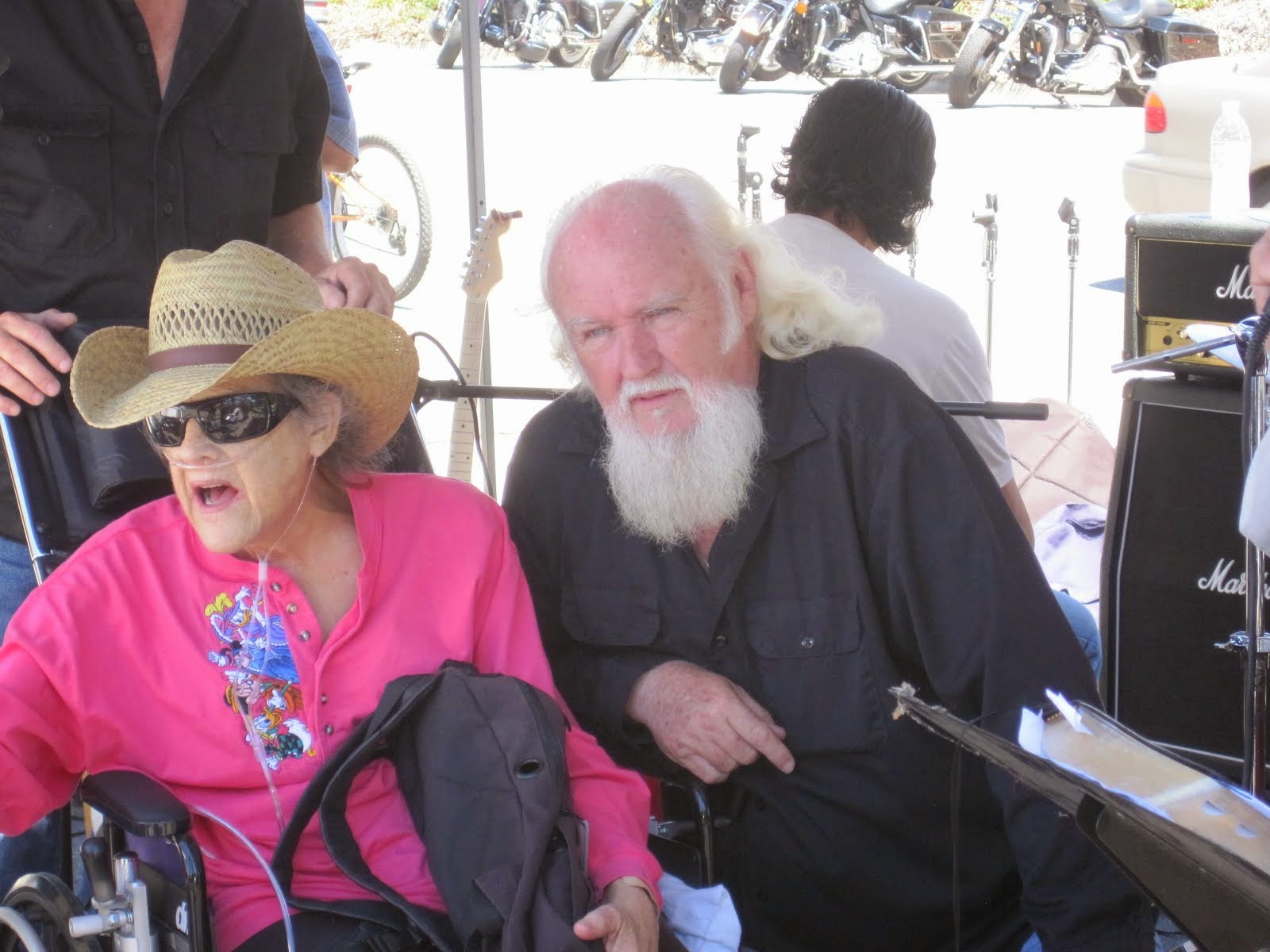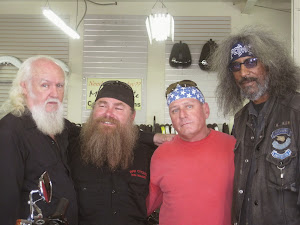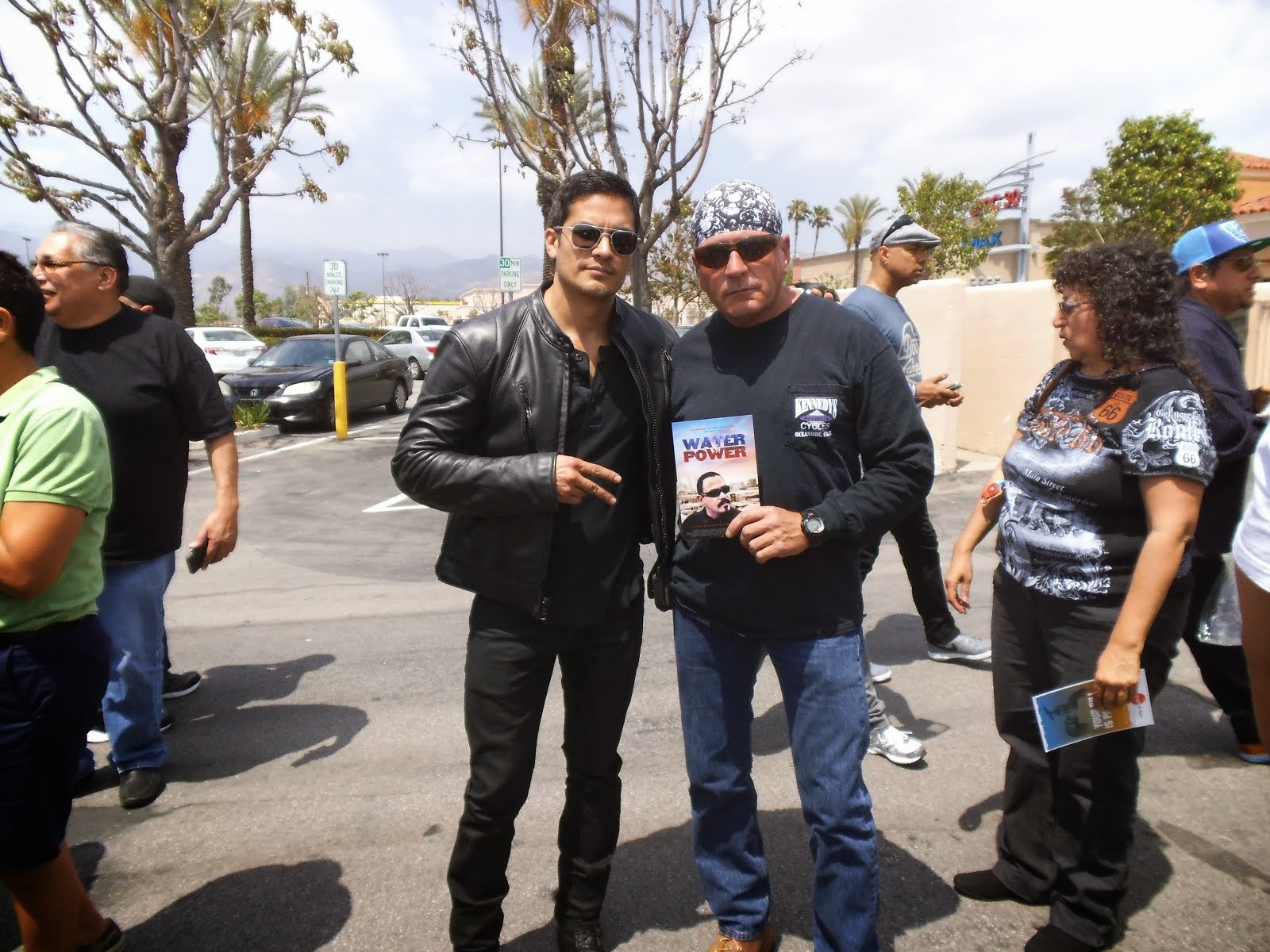OFF THE WIRE,F.Y.I.
BY: Don Kelley
Probation and Parole Supervisor, Montana Department of Corrections
Source: corrections.com
Editor's note: This Part III of a five part series of articles about street gangs and motorcycle clubs, issues for both correctional officers and probation and parole officers. It is intended to provide insight into the history, function and hierarchy of some of the most violent of worlds.
As we move into the second decade of new millennium, the role that the “big four” bike clubs plays has changed dramatically. What started out as a drunken party sponsored by the American Motorcycle Association in Hollister California in 1947 has grown into a multi-national cartel of associated clubs.
Whether it’s the Hells Angels, Bandidos, Outlaws or Pagans, all of the clubs answer to a “world president.”
The face of the recreational biker has changed dramatically. We have gone from a bunch of drunken, World War II veterans to doctors and lawyers on Harley Davidson’s.
The media coverage of biker incidents also has changed. The media no longer looks at all bikers as the “young hoodlums” described in the San Francisco Chronicle after an event in Hollister, Calif., that marked the birth of what we now refer to as outlaw motorcycle clubs.
A July 1947 hill climb at Hollister, sanctioned by the American Motorcycle Association, turned into a riot. The association later said 99 percent of the bikers at the event were law-abiding citizens and not connected to the 1percent faction that caused the problems.
Media now gives us the picture that bikers “take out their own trash,” preferring to give the perspective that bikers are less dangerous now and have reached some dimension of respectability in the community. In an effort to attain a respectable image, motorcycle clubs actively recruit professional people.
Let’s start at the roots of what is now the “biker culture.”
Motorcycle gangs got started after World War II, when they were thought to be nothing more than youthful rebellion. Thanks to high-profile Hollywood movies and other public events, they gathered an exaggerated reputation.
The Wild Ones in 1954 and Easy Rider in 1969 glamorized biker activity and the biker lifestyle. The Hell's Angels gained broader exposure when they were hired to handle security for a Rolling Stones concert at the Altamont Speedway in California in 1969. Sometime during the show, the Angels reportedly turned on the audience and killed a fan.
During the 1970s, nearly 900 outlaw biker clubs existed, some of them with a large number of chapters that operated inside the United States. By the '80s, the FBI recognized motorcycle clubs as a national threat, ranked just behind La Cosa Nostra (Sicilian mafia).
While concentrated law enforcement actions are disruptive, the gangs have responded by recruiting attorneys who specialize in organized crime cases. Some bikers even found that going to jail has its benefits. They learned new and possibly more profitable techniques from other prisoners.
The most common question I receive when I am asked about bikers is what the 1% patch means on the vests outlaw bikers wear. Simply put, it is the signature of an outlaw biker. The outlaw biker feels that society has never given him the respect or breaks he deserves or allowed him to be a member, so now he does not want to be a part of it and rejects all of its rules, instead living by the “biker code.”
It has its roots in that 1947 hill climb incident where 1 percent was cited as the troublemakers. Here’s how outlaw bikers explain the “1 percenters.”
A 1%er is the one of a hundred of us who have given up on society
And the politicians one way law.
This is why we look repulsive.
We are saying we don’t want to be like you or look like you.
So stay out of our face.
Look at your brother standing next to you and ask yourself if you would give him half of what you have in your pocket.
Or half of what you have to eat.
If a citizen hits your brother will you be on him without asking him why?
There is no why.
Your brother isn’t always right but he is always your brother!
It’s one in all in.
If you don’t think this way then walk away.
Because you are a citizen and don’t belong with us.
We are outlaws and members will follow the Outlaws way or get out.
All members are your brothers and your family.
Will you steal your brother’s possessions, money, woman, class or his humor.
If you do your brother will do you.
All outlaw motorcycle clubs have bylaws or a constitution that sets an acceptable standard of conduct and administrative procedures for the club. The bylaws cover matters such as membership requirement, penalties for misconduct, and acceptable behavior during runs or meetings. While bylaws differ from club to club, the following are examples of common ones.
•All members must be male and at least 18 years of age.
•All prospective new members must be sponsored by a current member.
•All prospective new members must complete a probation period.
•All members pay monthly dues and all new members will pay initiation fees to the national headquarters.
•No member shall transfer from one chapter to another without the permission of both presidents and will pay a transfer fee to the national treasurer.
•When a member is in another jurisdiction, he will abide by their by-laws and president.
•Any member caught using the needle will lose his colors and everything that goes with them.
•Members may only ride Harley Davidson or Indian motorcycles.
Other Articles in this Series
Part I - Street Gangs Got Start in L.A.
Part II - Gangs Lure Members in Getting Foothold
--------------------------------------------------------------------------------
skip to main |
skip to sidebar




Bill & Annie

Art Hall & Rusty


NUFF SAID.......


































































OOHRAH

ONCE A MARINE,ALWAYS A MARINE

GIVING BACK


MOUNT SOLEDAD














BIKINI BIKE WASH AT SWEETWATER










FRIENDS





BILL,WILLIE G, PHILIP










GOOD FRIENDS


hanging out

brothers


GOOD FRIENDS

Good Friends

Hanging Out




Bill & Annie
Art Hall & Rusty
Art Hall & Rusty


NUFF SAID.......



















NUFF SAID......



























Mount Soledad




BALBOA NAVAL HOSPITAL
RUSTY DANNY

ANNIE KO PHILIP

PHILIP & ANNIE

OUT & ABOUT

OOHRAH...

OOHRAH
ONCE A MARINE,ALWAYS A MARINE

ONCE A MARINE,ALWAYS A MARINE
American Soldier Network GIVING BACK

GIVING BACK
CATHY & BILL
PHILIP & DANNY & BILL

MOUNT SOLEDAD
bills today
EMILIO & PHILIP
WATER & POWER
WATER & POWER
bootride2013



BIKINI BIKE WASH AT SWEETWATER







ILLUSION OPEN HOUSE

FRIENDS


GOOD FRIENDS



BILL,WILLIE G, PHILIP









GOOD FRIENDS

GOOD FRIENDS
Friends
- http://www.ehlinelaw.com/losangeles-motorcycleaccidentattorneys/
- Scotty westcoast-tbars.com
- Ashby C. Sorensen
- americansoldiernetwork.org
- blogtalkradio.com/hermis-live
- davidlabrava.com
- emiliorivera.com/
- http://kandymankustompaint.com
- http://pipelinept.com/
- http://womenmotorcyclist.com
- http://www.ehlinelaw.com
- https://ammo.com/
- SAN DIEGO CUSTOMS
- www.biggshd.com
- www.bighousecrew.net
- www.bikersinformationguide.com
- www.boltofca.org
- www.boltusa.org
- www.espinozasleather.com
- www.illusionmotorcycles.com
- www.kennedyscollateral.com
- www.kennedyscustomcycles.com
- www.listerinsurance.com
- www.sweetwaterharley.com

Hanging out

hanging out
Good Friends

brothers
GOOD FRIENDS

EMILIO & SCREWDRIVER

GOOD FRIENDS
Danny Trejo & Screwdriver

Good Friends
Navigation
Welcome to Bikers of America, Know Your Rights!
“THE BIKERS OF AMERICA, THE PHIL and BILL SHOW”,
A HARDCORE BIKER RIGHTS SHOW THAT HITS LIKE A BORED AND STROKED BIG TWIN!
ON LIVE TUESDAY'S & THURDAY'S AT 6 PM P.S.T.
9 PM E.S.T.
CATCH LIVE AND ARCHIVED SHOWS
FREE OF CHARGE AT...
BlogTalkRadio.com/BikersOfAmerica.
Two ways to listen on Tuesday & Thursday
1. Call in number - (347) 826-7753 ...
Listen live right from your phone!
2. Stream us live on your computer: http://www.blogtalkradio.com/bikersofamerica.
A HARDCORE BIKER RIGHTS SHOW THAT HITS LIKE A BORED AND STROKED BIG TWIN!
ON LIVE TUESDAY'S & THURDAY'S AT 6 PM P.S.T.
9 PM E.S.T.
CATCH LIVE AND ARCHIVED SHOWS
FREE OF CHARGE AT...
BlogTalkRadio.com/BikersOfAmerica.
Two ways to listen on Tuesday & Thursday
1. Call in number - (347) 826-7753 ...
Listen live right from your phone!
2. Stream us live on your computer: http://www.blogtalkradio.com/bikersofamerica.
Good Times
Hanging Out

Key Words
- about (3)
- contact (1)
- TENNESSEE AND THUNDER ON THE MOUNTAIN (1)
- thinking (1)
- upcoming shows (2)
Blog Archive
-
▼
2010
(4242)
-
▼
November
(629)
- NATIONWIDE, Americans Are Living (And Dying) In A ...
- CYBER SCAMS, BE WARNED....The 12 cyber scams of Ch...
- Media Campaign Begins, Head Injuries: Why Motorcyc...
- Football Helmets - NY Times, Used helmets worn by ...
- New Zealand, Warehouse new gang base
- Growth of San Diego's Navy fleet tied to tension i...
- Canada, ,Salmon Arm, Kelowna. 'They were up to no...
- SPINELESS PUKE BAG DISTRICT ATTORNEY, JONATHAN BLO...
- What are some good responses to this helmet statem...
- DOT vs. ECE Helmet Safety Standards
- Australia, Sydney, Strike force digs deep into dea...
- South Africa, Car driver causes chaos at PE bikers...
- Washington, DC, EDITORIAL: TSA's security charade
- New Delhi,India, IAS Officer Arrested For Barterin...
- Denver, CO. Donors line up to replace lost Christm...
- THE LAW AND YOU 1
- USA, The Eternal Value of Privacy, "Absolute power...
- Australia, Bandidos member found with gun......
- F .B. I.Deprivation of Rights Under Color Of LAW
- How to obtain a CCW permit, San Diego,Ca
- New Zealand, Marlborough, Lone Legion M/C, Warehou...
- CCW (Concealed- Weapons Permit) San Diego, Ca, Lit...
- US v. Camp Zoe
- DAYTONA, Private Company’s Registration of Bike We...
- CHESTER, S.C. These bikers ride for a cause, Iron ...
- Nevada, Carson City Probation Officer Accused of S...
- DUBAI, United Arab Emirates, Swiss motorbike cham...
- CAN WE RECORD COPS? Phone Calls and Research by Jo...
- Well, if you’re not doing anything wrong and have ...
- ANGOLA 3, IN ROBERT KING’S WORDS: “EVERYTHING LEGA...
- Ex-Marine Marching Across America Stops in Trenton
- South Attleboro, MA. Joes Sock Fund – Can you help?
- Midland, Texas - Feds Push for Nationwide Motorcyc...
- DOJ Components' FOIA Service Centers/Liaisons
- United States Dept of Justice, Freedom of Informat...
- READERS SOUND OFF, Case Against Motorcycle Helmet ...
- Bahrain, Parading patriotism!!!!!!!!!!!!!!!!
- Appeals court derails use of GPS in case, Decides ...
- LITTLETON, Colo. Charity donations stolen
- Sons of Anarchy: Sonny Barger Cameo, Featuring Att...
- Freedom of Information Act ,FOIA Reference Mater...
- More excellent info here for helmets Transportatio...
- New Zealand, Gang members grieve for powerful, fe...
- CAN WE RECORD COPS?
- North Park, San Diego,Ca, Pepper-Spraying Men Rob ...
- OCEANSIDE, Calif. FYI: Marine Corps presents most ...
- EXCLUSIVE: Hells Angel Sonny Barger to Guest on 'S...
- United States Marine Corps, Marines Move Heavy Met...
- Canada, Hells Angels busted in Salmon Arm
- CCW (Concealed- Weapons Permit) San Diego
- Phoenix, AZ, Police ID Man Shot to Death Near Priv...
- Health care dictatorship: A crime against America
- Florida, Bikers, City Hall team up to honor veterans
- Fully Informed Jury Association
- Canada, Kelowna connection to bikers bust, Police...
- Company says it owns Bike Week name
- Where The Burgess Case Stands Now
- Photo`s, Videos,or Recording Your Traffic Stop, of...
- Australia, Senior officer 'hacked police computer ...
- Mexico's modern city succumbs to drug violence, MO...
- The One Big Investigation
- San Diego drug tunnel had railcar, tons of pot, an...
- Canada, Police 'harassment' frustrates Pammett
- Australia, Bikies charged over fight in Fremantle
- Australia– Wiley Park, Alleged Bandidos OMCG memb...
- New York City Police Photograph Irises of Suspects
- FBI Thwarts Somali-Born Teen's Car Bombing, SCORE ...
- Orange County, CA, He Shall Be Set Free
- The First Banning of an MCs Colors in the USA
- Oppose S.510 - Do not take the chance of regulatin...
- San Diego,Ca, It’s easier riding for local motorcy...
- ALBANY, GA, Motorcycle club making holidays extra...
- Fond du Lac, WI - FdL police officer gets 3-day su...
- Taking Pictures of a Police Officer
- Biker Donations Help Feed Boys, Girls
- The Feds’ Illegal/Unauthorized/Murderous War on Bi...
- PENNSYLVANIA:Helmet debate begins anew NTSB puts i...
- Australia, Gypsy Jokers 'drug running' to mines
- Gangs Still Active in US Military
- Introducing Preacher Chuck D's Alpha Biker Road Rash
- 1st Annual Big Tom Berg Memorial Toy Drive
- New Zealand, Gang members grieve for powerful, fea...
- Australia, Bikers on drug charges in WA
- Australia, Bikie's partner guilty of stealing
- The Case Against Motorcycle Helmet Laws, Biker Ri...
- Sons of Silence Harley to Law Museum
- Australia, Bandidos gang member points loaded gun ...
- Australia, Finks front court over CCC contempt cha...
- Canada, Back-to-back suspicious fires in B.C. link...
- Former Pagan held for trial in shooting of College...
- Australia, Finks charged with contempt over motor...
- United Kingdom, Police chief faces misconduct probe
- QUOTES,
- Australia, Finks bikies face contempt charges in WA
- Co-Sponsor H.R. 1475 Good Time Bill
- Not specifically biker related... but certainly ri...
- SOUTH CAROLINA: NTSB Asks States to Improve Motorc...
- Pennsylvania, Helmetless riding a costly freedom
- Massachusetts, Attorney Paul Lancia Joins New Eng...
- "Hermis Live!"- 46 Minutes UNTIL SHOW
-
▼
November
(629)
Bikers of America, Know Your Rights!... Brought to you by Phil and Bill
Philip, a.k.a Screwdriver, is a proud member of Bikers of Lesser Tolerance, and the Left Coast Rep
of B.A.D (Bikers Against Discrimination) along with Bill is a biker rights activist and also a B.A.D Rep, as well, owner of Kennedy's Custom Cycles
